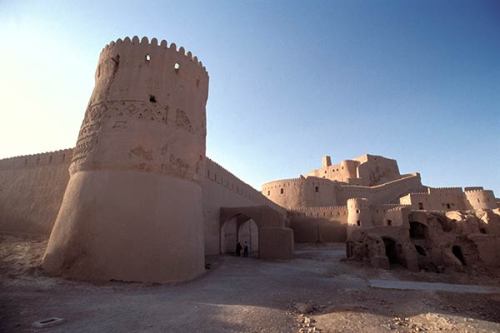#sassanian empire
The ruined city of Arg-e-Bam is made entirely of mud bricks, clay, straw and the trunks of palm trees. The Iranian city was originally founded during the Sassanian period (224-637 CE) and while some of the surviving structures date from before the 1100s, most of what remains was built during the Safavid period (1502-1722).
Bam prospered because of pilgrims visiting its Zoroastrian fire temple, which had been built early in the Sassanian period, and because Bam was a trading hub along the Silk Road. It was later the site of Jame Mosque, built during the Saffarian period (866-903 CE). Next to the mosque is the tomb of Mirza Naiim, a mystic and astronomer.
The city was largely abandoned since a series of invasions in the early 1800s. In 1953, work began to intensively restore Arg-e-Bam. Restoration work continued until December 26, 2003, when a massive earthquake hit the area – an estimated 6.6 on the Richter Scale. Almost everything in Bam was destroyed. After that, restoration was given up, and today Arg-e-Bam is at the mercy of the elements.
Post link
Detail of Shirin, Queen of the Sassanian Empire, bathing. The hooves of the horse of King Khosrow can be seen at the top right. From the Kashmir Manuscript, 1791.
Shirin was the wife of Khosrow II, the shahanshah, or King of Kings, of the Sassanian (Persian) Empire. Her exact cultural/ethnic origins are debated; some sources say she was Roman (at her time that was the Byzantine Empire who considered themselves Roman) and others say she was Aramean, a non-Persian from the areas of Assyria and Babylonia.
What is known is that she was a Christian and Khosrow was Zoroastrian and that such a relationship was considered forbidden. Through all the turmoil in their lives, Shirin and Khosrow remained together. During that time she was able to gain support for the Christian minority in the empire.
Her and Khosrow’s lives and romance are retold, with fictional elements, in the Persian epic poem Shahnameh, the romance Khosrow and Shirin by the famed poet Nizami Ganjavi, and even in One Thousand and One Nights.
~Hasmonean
Post link





